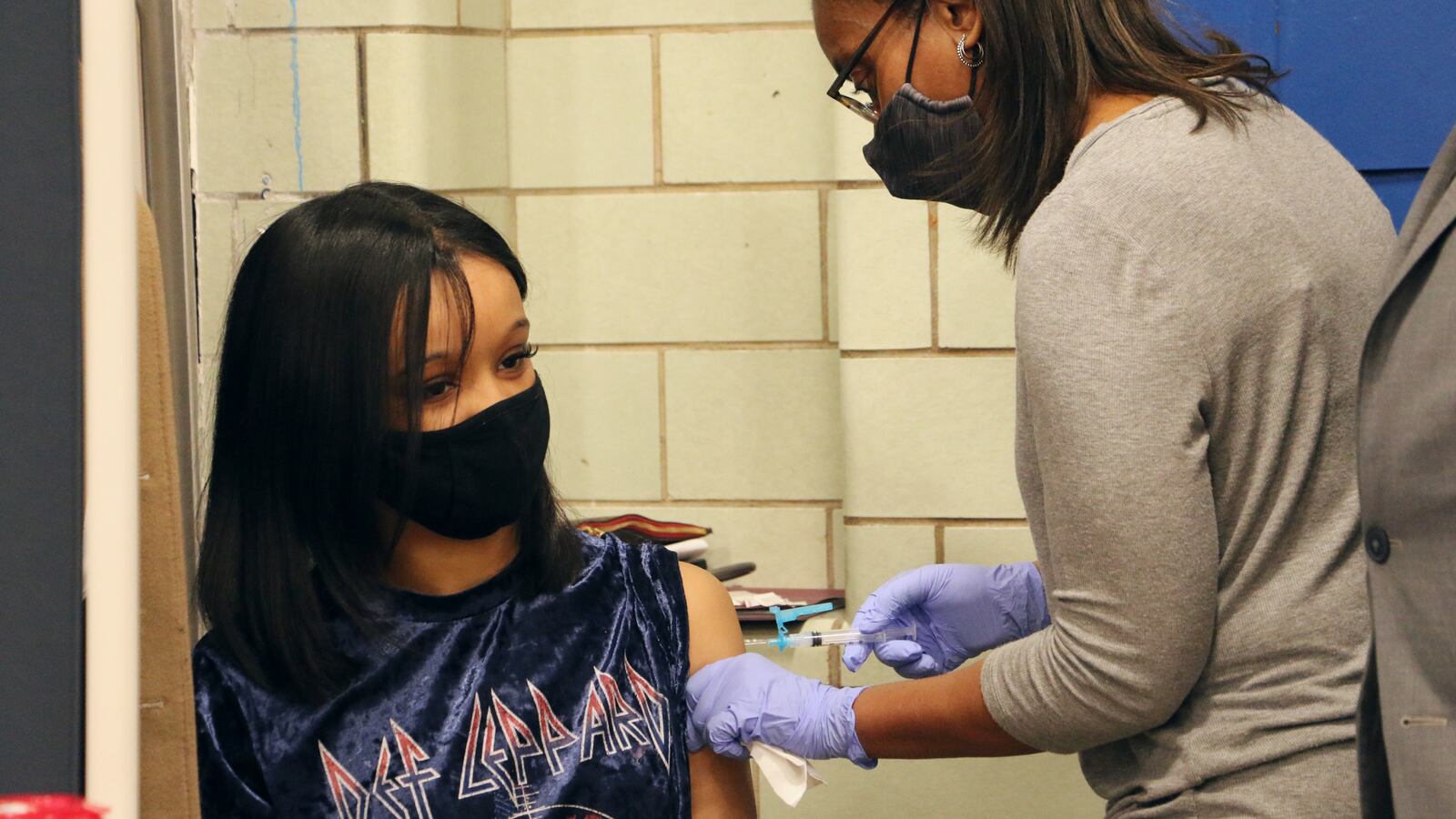Since Illinois schools closed abruptly in March 2020, Dr. Ngozi Ezike has been a regular presence at each of Gov. J.B. Pritzker’s press conferences, assessing the threat of the coronavirus and explaining to Illinoisans what to do to protect themselves from the virus.
Now that Illinois students are returning to classrooms and schools are settling into a post-pandemic routine, the state’s top health official has tried to reassure parents and teachers who continue to raise concerns about whether campuses can reopen safely as coronavirus cases surge.
The current school year is presenting new challenges for Ezike to solve. The highly contagious delta variant has been responsible for a spike in coronavirus cases across the state, Ezike said.
All school employees should have received their first dose of a COVID-19 vaccine by Sunday. Illinois school districts are boosting their efforts to test students while navigating outbreaks and quarantining students.
Chalkbeat asked Ezike what the state has learned so far about school reopening, student vaccination rates, and school outbreaks.
This interview has been edited for length and clarity.

Pfizer-BioNTech announced Monday that its COVID-19 vaccine is safe and shows a robust antibody response for children between 5-11. How is IDPH thinking about an Illinois rollout and how soon could that happen?
We absolutely are thinking about the rollout pending the final emergency use authorization. We’re currently working with pediatricians and pediatric groups, family physicians, the different providers who would be providing care to this population to come up with a plan. We want all people on board to help get these people vaccinated as well as schools and the local health department.
Pfizer is saying that they think it’s safe for (children ages) 5 to 11, but there’s still quite a few steps before it would be officially authorized. So far we’ve heard predictions about it happening before the end of the year, we’ve heard November.
IDPH has been tracking school outbreaks and potential exposures. Have there been any trends with schools and districts who have seen outbreaks?
We have reported over 200 school outbreaks. That might not even capture all of them, as we know that ongoing outbreaks right now are being managed by the local health departments. They might not get to reporting the information in the outbreak system until a little bit later. However, the number of cases that we are seeing in youth are very high. We haven’t seen numbers this high since the peak periods of the pandemic like November of last year or January of this year.
Would IDPH be able to tell if cases in school are due to violations of the state’s mask mandate, outbreaks connected to sport games, busing students, or proximity to college campuses?
Anecdotally, we’ve heard from the local health department that there have been issues with mask compliance where we’ve seen significant outbreaks. We’ve definitely seen cases and outbreaks related to sports, but we actually are seeing fewer sports-related outbreaks currently than we saw last fall.
A lot of college campuses have higher rates of vaccinations than our school campuses because everyone in a college campus is eligible for vaccination. We don’t think there would be a direct correlation between what’s happening on a college campus and the school, except for the fact that if they’re in the same community. We know that if there are much higher levels of infection in a community, that tends to have the ability to spill over into a smaller community within that community especially if there are lots of unvaccinated people in there.
Are you seeing more cases in elementary schools compared to high schools, given who is eligible for vaccines?
Yes, we are seeing more and more cases in the younger groups when we look at outbreaks. I think 20% of the reported outbreaks are in high school, which means that 80% are in elementary and middle school. We have seen a growing number of cases in the lower pediatric population.
If cases continue to rise due to the highly contagious delta variant, do you think that schools will have to revert back to remote learning during this year? Especially for younger students who aren’t eligible for vaccines.
Even in this difficult, divided time, I think one thing that everybody agrees upon is that we want kids in school for in-person learning. To help promote as much in person learning as possible, that requires vaccination, masking, and testing.
Do you think school districts should mandate student testing?
We absolutely know that there’s a trio of efforts that are needed, with testing being very critical. We have made testing available to all of our public schools. Since last year, we have been calling and knocking on doors to get this testing program on board. The schools that took us up on that, they’re in great shape now. Now, we see a lot more schools trying to take advantage.
What is the public health department doing to ramp up school-based testing?
We are offering free testing to all schools outside of Chicago and we are funding the cost of that. In addition to testing, we have continued to reach out to school districts to help create vaccination clinics. We’re pushing on all the levers, whether it’s testing or helping people get vaccinated.
Vaccination rates among students 12-17 started strong but have appeared to flatten. What is the state doing to promote vaccination among teens? Can it do more? What role do schools play here?
We know that 50% of the 12-17-year-olds in Illinois are fully vaccinated. That number goes up to almost 87% if you see people who have at least gotten their first dose. We know that about 10,000 people get vaccinated in the state every day with their first dose and about 12% of those people are 12 to 17. So, 1,100-1,200 kids are getting vaccinated everyday.
We’re continuing to work with our schools and pediatricians to make sure that they are pushing it as kids are still going into the doctor’s office for their physicals for their sports exam or their flu shots.

